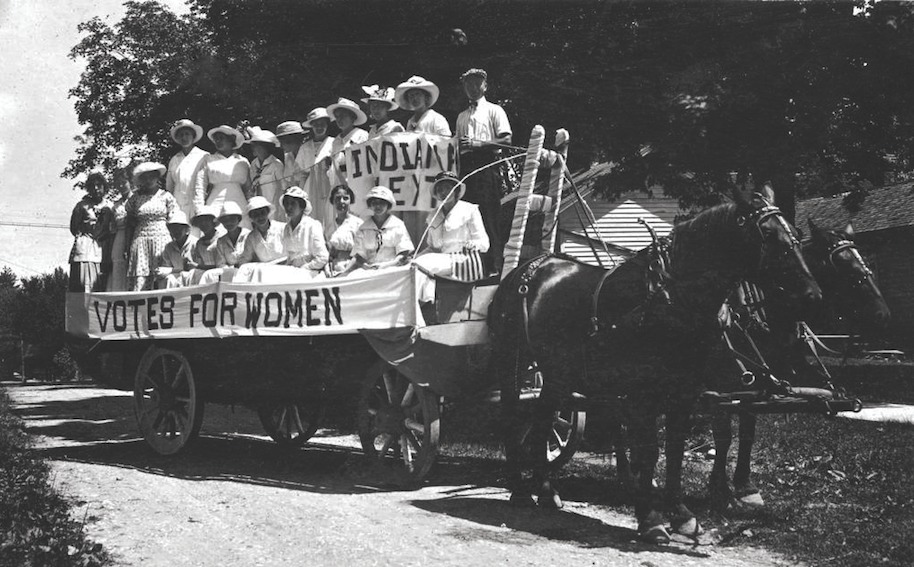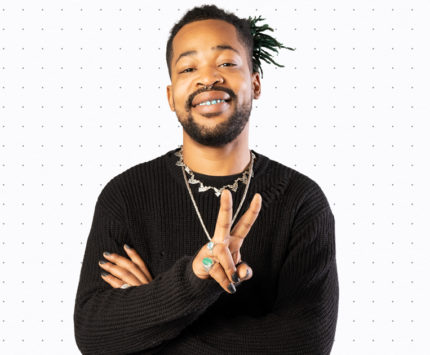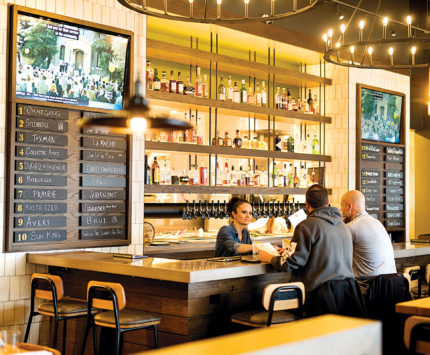Backtrack: Women’s Suffrage

Crusaders for women’s right to vote were on the verge of success during this demonstration, captured on a 1919 postcard. Image courtesy Indiana Historical Society
Amanda Way is no longer a household name. When we think of suffragettes who crusaded for women’s right to vote, names like Susan B. Anthony and Elizabeth Cady Stanton are more likely to come to mind. But in their day, both of those famous feminists dubbed Way the “mother of ‘The Woman Suffrage Association.’” The determined Hoosier does deserve major credit for Indiana ratifying the 19th Amendment, giving women the vote, 100 years ago this month.
Way was born in 1828 near Winchester, about 20 miles east of Muncie, to Quakers. She showed just how fiercely she could take up a cause when, at the age of 26, she organized a group of some 50 women who went around town to liquor stores, asking the owners to stop selling alcohol. Some said yes, some said no—but either way, barrels of booze were rolled out into the streets and emptied in what became known as the Whiskey Riot.
Way never shied away from public action—at the first Women’s Rights convention, in Dublin, Indiana, in 1851, she said, “Unless women demand their rights politically, socially, and financially, they will continue in the future as [they have] in the past.” She was known as a persuasive orator—in History of Woman Suffrage, a series of books published from 1881 to 1922, the editors (including Anthony and Stanton) wrote, “She is a calm, forcible, earnest speaker, and, though quiet and reserved in manner, she is genial and warm in her affections.”
Way, so influential in the start of the women’s suffrage movement, took up the ministry instead later in her life. In the 1870s, she moved to Kansas, where she was a pastor and helped add a prohibition amendment to the state constitution. She also helped found of the Woman’s Christian Temperance Union in Kansas.
Feminists had not forgotten her, though. In 1905, she was asked to address the national American Woman Suffrage Association convention in Portland, Oregon. She eventually settled in Southern California, where she died in 1914—six years before Indiana Gov. James P. Goodrich signed the 19th Amendment into law at last.





